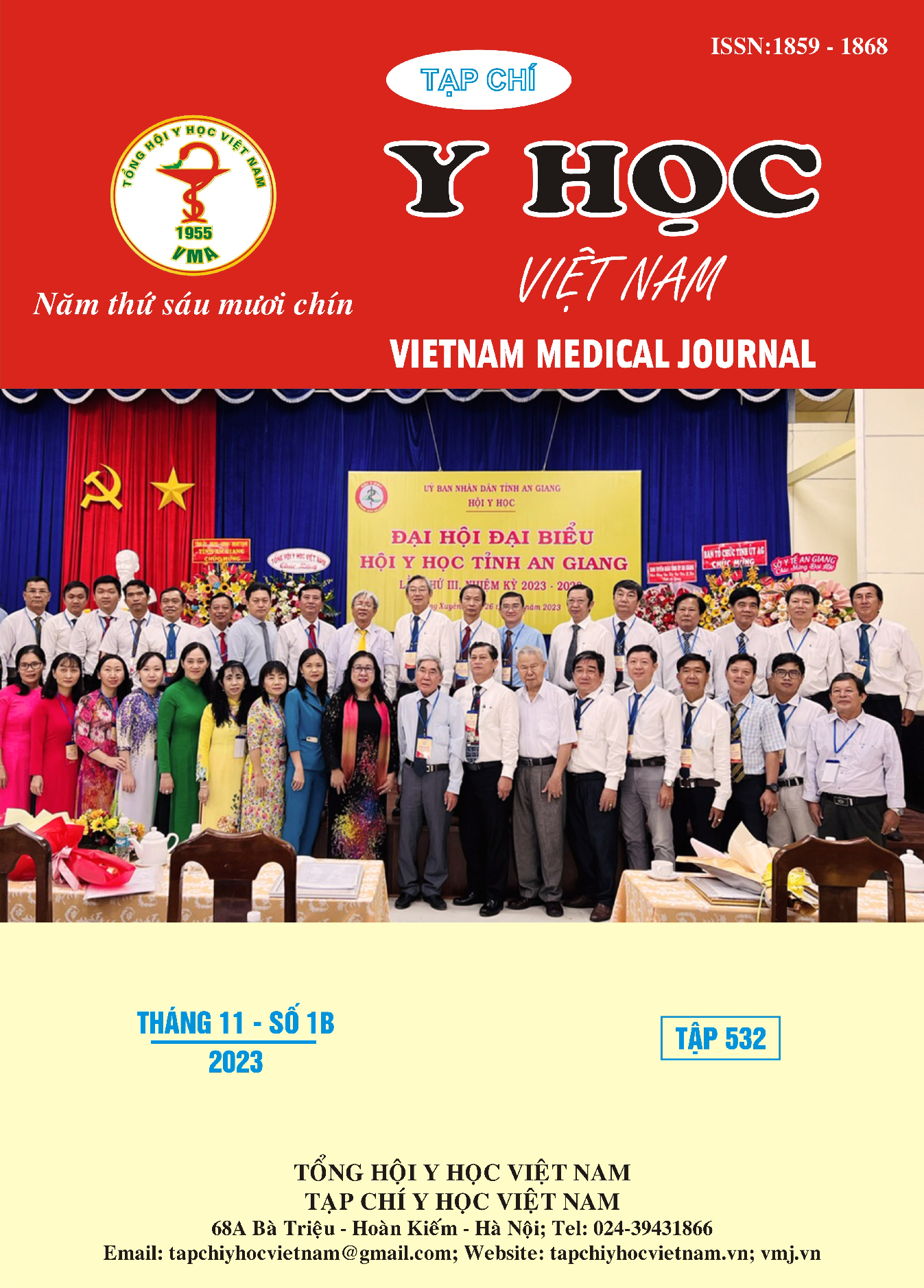OUTCOME OF PHACOEMULSIFICATION IN EYES WITH CATARACT AND CORNEAL OPACITY
Main Article Content
Abstract
Purpose: to evaluate outcome of phacoemulsification in patients with cataract and corneal opacities and related factors. Methods: The clinical intervention, uncontrolled study included 31 eyes of 27 patients with cataract and corneal opacity, which undergone phacoemulisification with intraocular lens (IOL) implantation, in Corneal department, Vietnam National Eye Hospital from August 2022 to August 2023. Evaluation criteria include visual acuity before surgery and after surgery at one day, one week, one month, and three months, the location and grade of corneal opacity before surgery and corneal oedema after surgery, the intraoperative and postoperative complications. Results: The ratio of male and female were 16/15. The average age was 64.94±14.031 (range 27 to 86 years old), the group of patients ≥ 60 years old accounts for the highest proportion with 76.7%. 30/31 eyes (96.77%) had IOL placed in capsular bags. The pre-operative visual acuity of 2.0516 in logMAR improved significantly to 0.8325 at the end of 3 months follow up. No eye was recorded with complications of posterior capsule tear, vitreous loss, uveitis, endothelial decompensation or recurrent keratitis during the follow-up period. There was one case had a torn pupil edge, one case had a burn at the incision, one case had residual cortex in anterior chamber, and one case had an incision leakage that need to be sutured in the next day postoperatively. Conclusions: Phacoemulsification and IOL implantation in cases of coexisting cataracts with grade II and III corneal opacities is safety and helps to improve the visual acuity for patients, especially when combined corneal transplantation and phaco surgery cannot be done.
Article Details
Keywords
Phacoemulsification, cataract, corneal opacity
References
2. Farjo, A. A., Meyer, R. F. & Farjo, Q. A. Phacoemulsification in eyes with corneal opacification. J. Cataract Refract. Surg. 29, 242–245 (2003).
3. Dua, H. S. A new classification of ocular surface burns. Br. J. Ophthalmol. 85, 1379–1383 (2001).
4. Tăng Thị Yến Nhi. Khảo sát kết quả điều trị đục thủy tinh thể bằng phẫu thuật phaco, có đặt kính nội nhãn tại Bệnh viện Trường Đại học Trà Vinh. Tạp Chí Khoa Học Trường Đại Học Trà Vinh 13, (2023).
5. Nguyễn Hữu Minh Trí. Đánh giá sự cải thiện thị lực nhìn xa của bệnh nhân trước và sau phẫu thuật phaco. Tạp Chí Dược Học Cần Thơ 91–97 (2022) doi:10.58490/ctump.2022i49.219.
6. Bùi Thị Vân Anh & Bùi Thị Quỳnh Anh. Kết quả thị lực và khúc xạ sau phẫu thuật phaco với công suất thể thủy tinh nhân tạo tính bằng các công thức thế hệ mới. Journal of 108 - Clinical medicine and pharmacy 13, (2018).
7. Panda, A., Krishna, S. N. & Dada, T. Outcome of phacoemulsification in eyes with cataract and corneal opacity partially obscuring the pupillary area. Nepal. J. Ophthalmol. 4, 217–223 (2012).
8. Rateb, M. F., Hussien, M. S., Tohamy, D. & Kedwany, S. M. Phacoemulsification in patients with corneal opacities using slit illumination of the surgical microscope. J. Cataract Refract. Surg. 48, 374–377 (2022).


